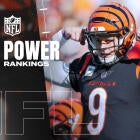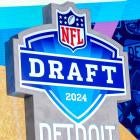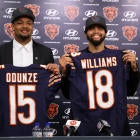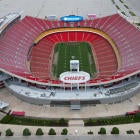An NFL player coming off a successful season when his contract expires is in an enviable position. It typically paves the way for a massive payday. Defensive tackle Ndamukong Suh took advantage of the Lions’ inability to franchise him because of the exorbitant cost to get what was close to elite quarterback money from the Dolphins during free agency in 2015.
That same year, outside linebacker Justin Houston became the NFL’s second-highest paid non-quarterback behind Suh after nearly breaking Michael Strahan’s single season sack record in 2014. Kelechi Osemele received good left tackle money from the Raiders last offseason to redefine offensive guard compensation.
The reality is different for running backs
The NFL doesn’t work this way for running backs. Although Le’Veon Bell demonstrated he is the NFL’s most complete running back with the Steelers last season, DeMarco Murray’s free-agency experience in 2015 should serve as a cautionary tale. After an outstanding season in his contract year, Murray wasn’t able to monetize his success as much as he could if playing practically any other position because of the devaluing of running backs.
Murray was named the 2014 NFL Offensive Player of the Year after gaining 1,845 rushing yards. His 392 carries for the Cowboys were the eighth most in an NFL regular season. He tied for the NFL lead in rushing touchdowns and had the most yards from scrimmage. Murray also broke Jim Brown’s 56-year-old NFL record of six consecutive games with 100 rushing yards or more to begin a season with an eight-game streak.
Concerns about Murray’s future productivity because of how running backs performed historically after a season with an extremely heavy workload contributed to him being unable to raise the bar financially for running backs. Dallas reportedly was unwilling to pay more than $24 million over four years with $12 million fully guaranteed to keep Murray. The five-year, $40 million contract (worth a maximum of $42 million through salary escalators) containing $21 million in guarantees he received from the Eagles only made Murray the NFL’s sixth-highest paid running back by average yearly salary.
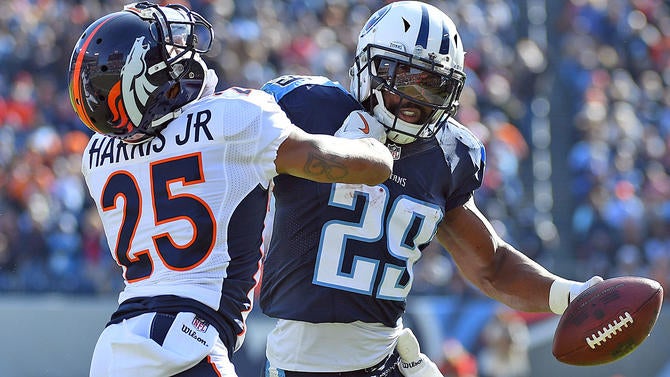
Bell is entering a worse financial climate than Murray had. The top of the running back market that existed for Murray is disappearing. Marshawn Lynch retired one season into a two-year, $24 million contract extension with the Seahawks running through the 2017 season, which was signed right before the start of 2015 free agency.
Adrian Peterson reworked his six-year, $85.28 million extension with the Vikings, which included $36 million in guarantees and an additional $4 million in base salary escalators, by trading a small amount of money for additional contract security. His 2017 contract year was turned into an option year worth $18 million that must be picked up by the Vikings before the last day of the 2016 league year, which is March 9. The 31-year-old will need to negotiate a new deal where he takes a drastic pay cut in order to remain with the Vikings in 2017 and beyond. Jamaal Charles, currently the league’s second-highest paid running back by average salary at $9.05 million, is expected to be released because of persistent knee problems.
LeSean McCoy is next in the running back salary hierarchy. When the Eagles dealt him to the Bills at the beginning of the 2015 trading period, McCoy received a new five year contract in the process worth $40.05 million with $26.55 million in guarantees. Murray, who was right behind McCoy financially, cut $5.45 million out of the base value of the remaining four years of his contract to help facilitate last offseason’s trade to the Titans while adding $1.85 million of annual incentives after an ineffective season with the Eagles.

Combating a declining running back market
Bell solidified himself as the NFL’s best dual-threat running back in 2016. He validated his 2014 breakout campaign in which he joined Marshall Faulk and Steven Jackson as the only running backs to record at least 1,300 rushing yards (1,361 yards) and 800 receiving yards (854 yards) in the same season with his 2016 performance.
Bell became the first player in NFL history to average at least 100 rushing yards per game (105.7) and 50 receiving yards per game (51.3) for a season. His 157 yards from scrimmage per game were the third-best mark in an NFL season only behind Priest Holmes and O.J. Simpson’s 163.4 and 160.2 yards per game in 2002 and 1975.
Bell elevated his play in the postseason. He rushed for 337 yards in Pittsburgh’s first two playoff games before being limited to 11 plays in the AFC Championship Game with a groin injury.
Bell is amassing yardage at a historic and unprecedented rate. His 128.7 yards from scrimmage are the most in NFL history (minimum of 45 career games). Brown is second with 125.5 per game.

Nobody has ever been better at picking up yards during the first four seasons of their NFL career. Edgerrin James, Eric Dickerson, LaDainian Tomlinson and Terrell Davis are right behind Bell with 127.7, 126.5, 125.7 and 124.5 yards per game.
Bell can make a legitimate case that he has transcended his position and should be compared to game’s highest-paid offensive play-makers instead of just running backs. This is because Bell is arguably the NFL’s most dangerous offensive weapon due to his running ability and receiving skills.
The highest-paid offensive play-makers are all wide receivers. Dez Bryant, A.J. Green, Julio Jones and Demaryius Thomas signed new contracts in 2015 averaging between $14 million and $15 million per year. With the exception of Green, the players received between $43.5 million and $47 million of guarantees in their contracts. The second tier of wide receiver deals are in the $11 million to $13 million range with an average of approximately $26.5 million in guarantees.
This type of approach has had varying degrees of success. Chris Johnson used it in 2011 to get a four-year extension from the Titans averaging $13,493,750 and containing $30 million in guarantees after a lengthy preseason holdout. The five-year, $43,097,500 extension (worth a maximum of approximately $49.1 million through salary escalators) with $20.5 million in guarantees Steven Jackson received from the Rams in 2008 was setting the running back market when Johnson signed.
Mitigating factors
Steelers vice president and general manger Kevin Colbert indicated that he didn’t have any issues with Bell’s ability or durability when meeting with the Pittsburgh media Thursday.
Bell was at a crossroads when the 2016 season began. His 2015 season was derailed by Week 8 MCL and PCL tears in his right knee. Then Bell started the season serving a three-game suspension under the NFL’s substance abuse policy for missed drug tests after having a four-game suspension reduced by one game on appeal. This was Bell’s second drug suspension in as many years. He was also suspended for the first two games of the 2015 season because of a substance abuse violation. Bell will be facing a four-game ban with another offense.
There isn’t any reason to doubt the sincerity of Colbert’s vote of confidence for Bell. Generally, NFL teams have reservations about making significant long-term financial commitments, especially at the level that will be required for Bell, with players that are considered injury or character risks. Bell could be put in both categories. His AFC Championship Game was a reminder that the best ability sometimes is availability.
If the Steelers approach the negotiations like most other NFL teams, Bell’s injury history and off-field problems will be used against him and reflected in the contract offers even though he appears to have started erasing any concerns the team might have about his reliability.
Time to embrace the franchise tag
Reports indicate that the Steelers will use a franchise tag on Bell if a long-term deal isn’t done before the designation period ends March 1. Most players view franchise player designations as a curse because the tag is essentially a high-salaried one-year “prove it” deal.
The franchise tag might be blessing in Bell’s case.
According to Pro Football Talk, the running back franchise tag is going to be 7.257 percent of the 2017 salary cap. Based on the NFL’s preliminary projections of a 2017 salary cap between $166 million and $170 million, Bell’s franchise tag should range from $12.047 million to $12.337 million. A second franchise tag in 2018 with a collective bargaining agreement mandated 20 percent raise would range from $14,456,400 to $14,804,400 using these projections.
Any competent agent tries to take the average of franchising a player twice and use the number as a fair approximation of a long-term deal when it’s a realistic possibility that his client will receive the designation to prevent him from becoming an unrestricted free agent. It’s going to be a tough sell with Bell since a contract averaging in the $13.5 million neighborhood doesn’t reflect the state of the top portion of the running back market. Nonetheless, the possibility of Pittsburgh putting a franchise tag on Bell can be used as ammunition to increase the floor on a long-term deal.
It wouldn’t be ideal but Bell’s best way to maximize his compensation might be playing under at least one franchise tag if the right deal doesn’t materialize before the July 15 deadline for reaching multiyear contracts with franchise players. There would be risk because a big payday could go out the window with another serious injury like in 2015. Bell has only a played a full 16-game regular season once, in 2014. He missed the playoffs that season with a hyperextended right knee.
Bell’s window of opportunity for a massive contract would still exist in 2018 at 26 even though running backs have a shorter shelf life than other positions. He could continue to erase any off-field concerns the Steelers might still have over the next year by waiting. Pittsburgh would have more pressure than this offseason to reach an agreement with Bell even if there is a second franchise tag because a third one would be the highest number at any position.
The quarterback franchise tag number could be approaching $25 million in 2019 with sustained salary cap growth.
So what is Bell’s long-term prognosis?
It’s hard to envision a scenario where Bell gets an Adrian Peterson-type mega-contract. However, the Steelers should be willing to make a four- or five-year commitment to Bell in the $11 million-per-year range, which is currently the bottom of second-tier wide receiver money, since he is such a dynamic play-maker.
Bell’s overall guarantees probably won’t approach McCoy or Murray’s in the Eagles deal because Pittsburgh contracts typically have a vanilla structure. With the exception of Ben Roethlisberger, the only true guaranteed money in Pittsburgh deals is a signing bonus. Roethlisberger’s guarantees are for injury only.
The bigger deals contain a third or fifth day of the league year roster bonus in the second and third years. The roster bonuses are supposed to be substitutes for additional contract guarantees. Since the overall guarantees in Pittsburgh contracts are usually less than comparable deals on other teams, a more substantial signing bonus will likely be necessary. If the $10 million-per-year extension, with $16 million treated as signing bonus under the salary cap, that All-Pro guard David DeCastro received right before the start of the 2016 regular season is any indication, Bell will be hard pressed to exceed $17.5 million of guaranteed money with an $11 million-per-year deal.
Salary escalators and incentives are also unlikely. The only significant exception the Steelers have made is also with Roethlisberger. He has 2018 and ‘19 third day of the league year roster bonuses that can increase by a maximum of $3 million and $6 million based on regular-season MVPs, Super Bowl MVPs and Pittsburgh’s Super Bowl wins in the previous years of his contract.













